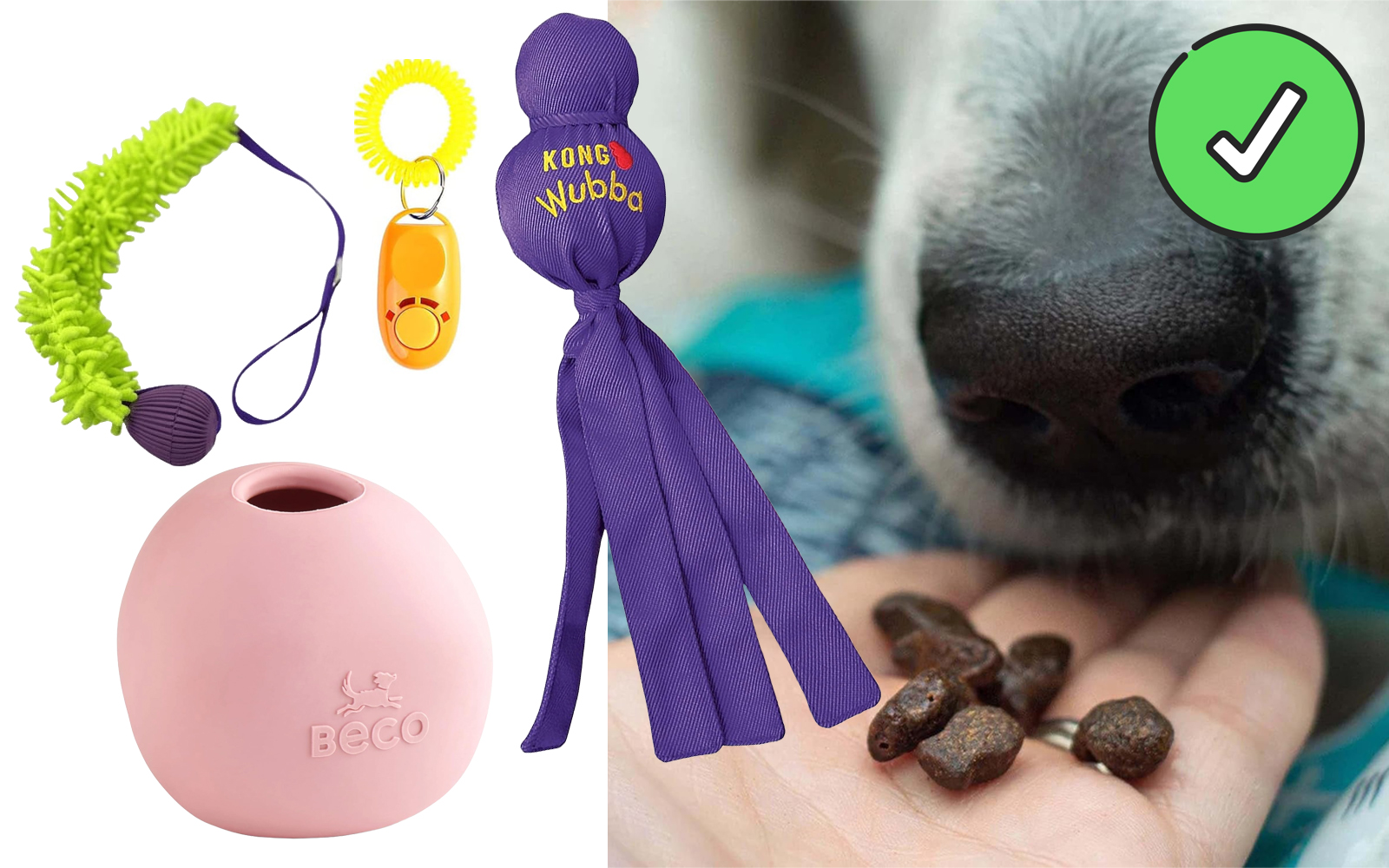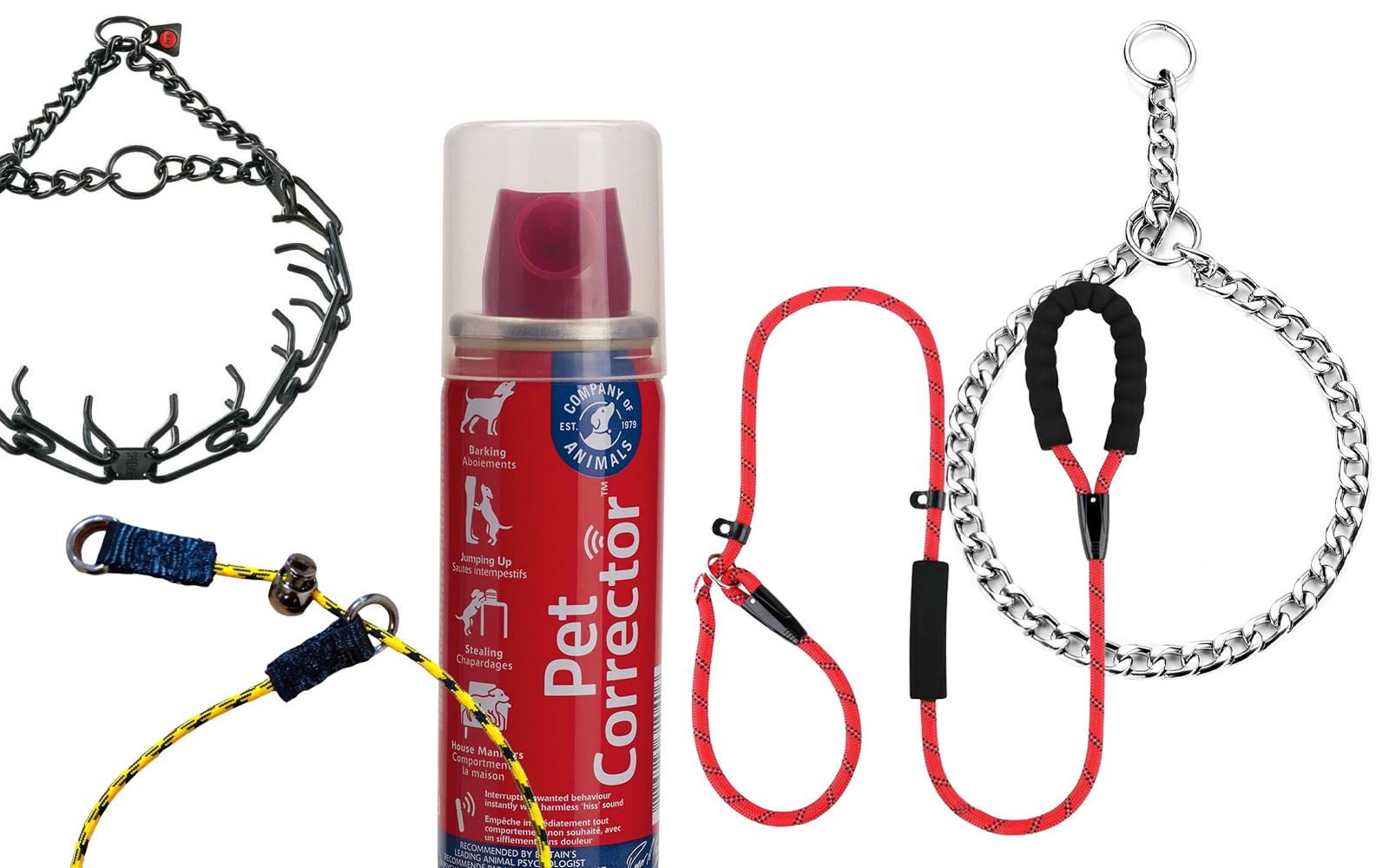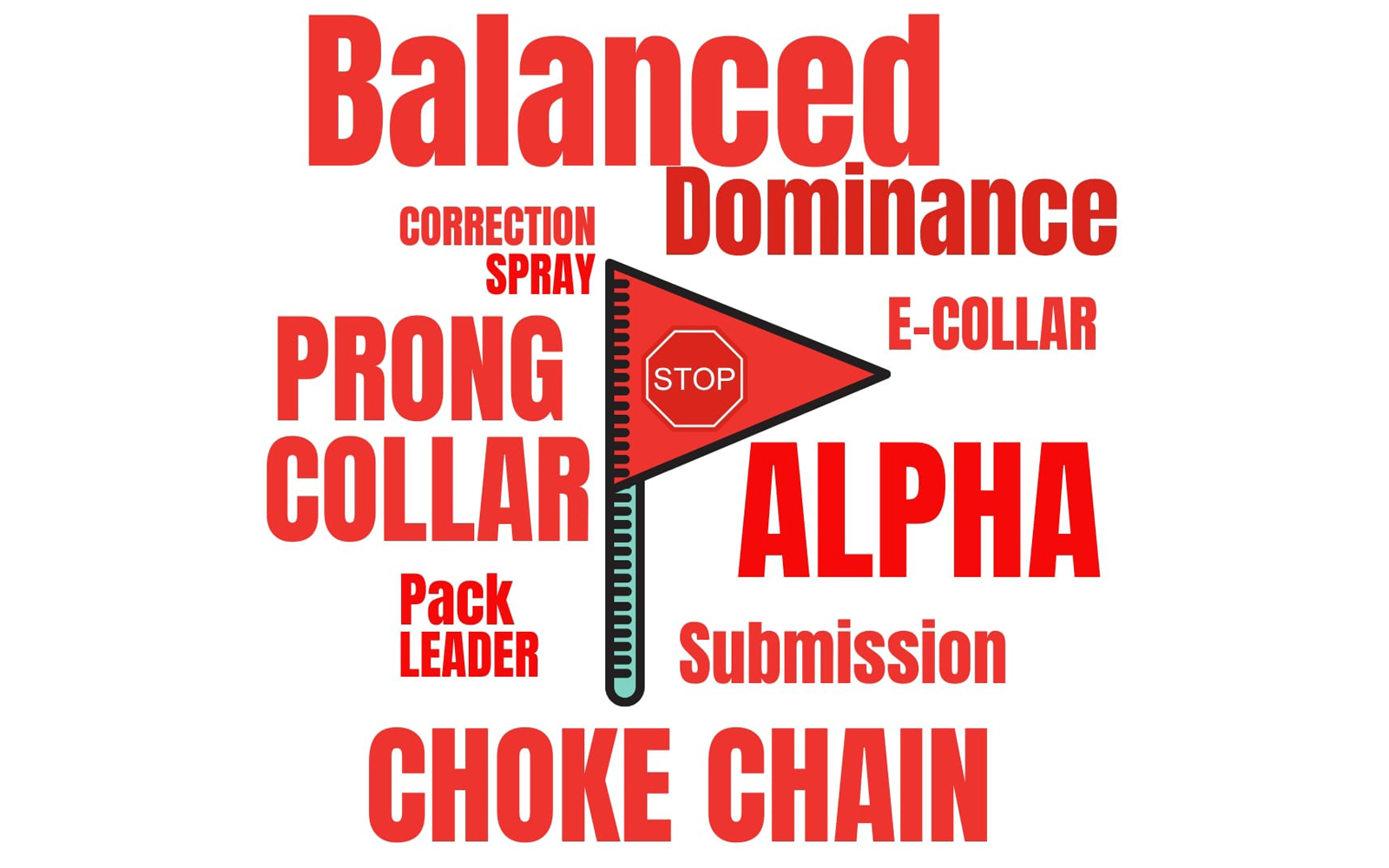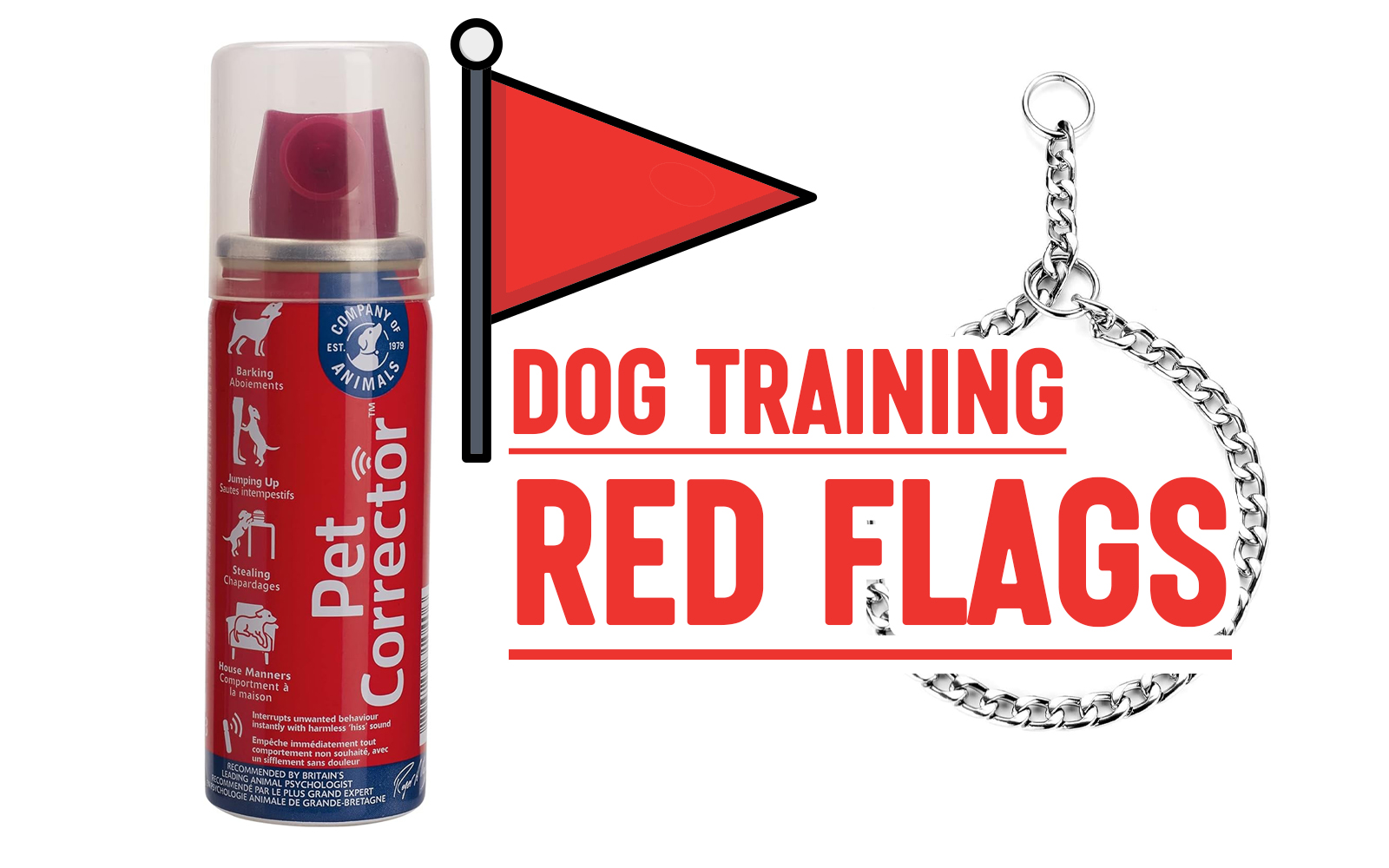The pet care sector is largely unregulated in the United Kingdom, which means anyone can call themselves a dog trainer or behaviourist without holding credentials or qualifications, making it confusing to find a good trainer or behaviourist.
This means that choosing the right professional dog trainer or behaviourist for your dog is a hugely important decision. After all, your dog’s well-being, behaviour, and the quality of your relationship are at stake. The right dog trainer can help guide your dog into becoming a well-behaved, confident, and happy companion. However, with the rise of unqualified individuals who may not have your dog’s best interests at heart, it’s important to be aware of the red flags that could indicate a dog trainer or behaviourist to avoid.
This guide aims to empower dog guardians with the know-how to make informed choices. We’ll explore what to look for in a dog trainer or behaviourist and, more importantly, what to avoid, and why reward-based training is the only way to go!
The importance of positive reinforcement & consent-based training

Before diving into the red flags, it’s important to understand what good dog training looks like.
Positive reinforcement is the gold standard in dog training.
This method focuses on rewarding desired behaviours rather than punishing unwanted ones. Positive reinforcement creates a learning environment based on trust and mutual respect. It encourages dogs to make the right choices because they want to, not out of fear.
Positive reinforcement might include treats, toys, or praise—anything your dog finds rewarding. This approach is supported by modern behavioural science and is widely recognised as the most humane and effective way to train dogs.
Red flags: what to avoid in a dog trainer

While positive reinforcement is the foundation of good training, some people still use outdated, harmful methods. Here are the key red flags to look out for:
1. Use of aversive tools
Shock collars: Sometimes called e-collars or electric collars, these devices deliver a shock to the dog in response to certain behaviours with a remote control. They are often marketed as harmless, but studies show that they can cause significant stress, fear, and anxiety in dogs, prompting dog owners to seek better training techniques.
Prong collars: These collars have metal prongs that dig into the dog’s neck when they pull on the lead. While some trainers argue they are effective, they can cause pain, injury, and a negative association with training.
Choke chains: A choke chain tightens around the dog’s neck when they pull on the lead. This can lead to physical injury, including tracheal damage, and can instil fear in your dog. These are also now covertly described as ‘Fur Savers’
Correction sprays: These sprays are used to startle dogs into stopping unwanted behaviour. While marketed as harmless, they can cause anxiety and fear, leading to more severe behavioural issues.
Slip leads and ‘French’collars/Leads: These tools tighten around the dog’s neck when pulled, similar to choke chains. They can cause discomfort, physical injury, and stress, leading to fear and anxiety in dogs. They are also known as ‘influencer training collars/leads’.
Any trainer who recommends or uses these tools should be avoided. These methods are not only outdated but can cause long-term psychological and physical harm to your dog.
2. Focus on dominance and pack theory
Some trainers still adhere to the outdated idea of dominance and pack theory. You might hear phrases like:
“You need to be the alpha.”
“Your dog is trying to dominate you.”
“Establish yourself as the pack leader.”
This approach is based on debunked theories about wolves in the wild. Modern science has shown that dogs do not form rigid hierarchies with humans and that trying to dominate your dog can lead to fear and anxiety, rather than respect and trust. The original studies on pack theory, conducted on captive wolves, have been thoroughly discredited. Wolves in the wild do not behave the same way as those in captivity, and dogs, who have been domesticated for thousands of years, do not form hierarchical packs with humans, which is important for dog owners to understand when they find a dog trainer.
David Mech, a renowned wolf biologist, initially supported the idea that wolf packs are led by a dominant “alpha” wolf. However, he later renounced this concept after further research. He discovered that wild wolf packs function more like families, where the parents naturally lead their offspring in a cooperative and non-aggressive manner.
This new understanding is vital for dog training because it shows that dogs, who have evolved differently from wolves, don’t need to be trained using dominance-based methods. Instead, they respond better to positive and cooperative approaches.
Trainers who focus on dominance often use harsh methods to “correct” behaviours, which can damage your relationship with your dog and create more behavioural issues. The idea of forcing your dog into submission is not only ineffective but can lead to long-term emotional and behavioural problems.

3. Punishment-based techniques
Any trainer who advocates for punishment-based techniques should be avoided. Punishment might include:
- Yanking on the lead when your dog pulls.
- Hitting or striking the dog.
- Using harsh verbal reprimands.
Punishment-based training can suppress unwanted behaviours in the short term but doesn’t address the underlying problems. It can also lead to fear, aggression, and other behavioural issues. A trainer who uses science-based methods will focus on positive reinforcement to encourage the behaviours they want to see.
4. Credentials or continuing education
While formal qualifications are not the only indicator of a good trainer, they do matter. A reputable trainer will likely have qualifications and accreditations from recognised bodies such as:
- The Association of Pet Dog Trainers (APDT)
- The Association of Pet Dog Trainers Ireland (APDTI)
- The Institute of Modern Dog Trainers (IMDT)
- PACT
- Victoria Stilwell Positively Dog Training (VSPDT)
- The Pet Professional Guild (PPG)
- The Animal and Behaviour Training Council ( ABTC )
- The UK Dog Behaviour & Training Council
- Yappily – The Ethical Dog Care Directory
Moreover, a good trainer will be committed to continuing education. Dog training is a field that is constantly evolving, and the best trainers keep up with the latest research and techniques.
If a trainer lacks credentials or shows no interest in continuing their education, this is a red flag. It may indicate that they are not up-to-date with modern, humane training methods.
What Is a dog behaviourist and why their qualifications matter
A dog behaviourist is a professional who helps with more complex dog issues, like aggression, anxiety, or fear-based behaviours. Behaviourists work on understanding why a dog might be acting a certain way and how to help them change that behaviour.
In the UK, it’s especially important that a behaviourist has studied and earned a recognised qualification, such as a degree in animal behaviour or certification from a reputable organisation like the Association of Pet Behaviour Counsellors (APBC) or the British Veterinary Behaviour Association (BVBA). These qualifications ensure that the behaviourist has a solid understanding of canine psychology and the best, most effective methods to help your dog.
Without proper qualifications, a behaviourist might not be fully equipped to handle serious behavioural issues, potentially making the situation worse. So, if your dog is showing challenging behaviours, it’s important to choose a qualified behaviourist who knows what they’re doing to ensure it gets the right support.
Qualifications to be recognised as a dog behaviourist in the UK
In the UK, becoming a qualified dog behaviourist requires specific education and credentials to ensure the professional has the necessary knowledge and skills to effectively and humanely address behavioural issues in dogs.
Key qualifications include:
- Degree in animal behaviour or a related field: A solid academic background is essential, typically a bachelor’s degree (BSc) in Animal Behaviour, Zoology, or a related discipline. Some behaviourists may also hold advanced degrees (MSc, PhD) in these fields.
- Certification from reputable organisations:
The Association of Pet Behaviour Counsellors (APBC): Membership with the APBC requires a high level of academic qualification and practical experience in animal behaviour
The Animal and Training Council (ABTC). The ABTC sets high standards for animal trainers and behaviourists, ensuring that their members use science-based, humane methods that prioritise the well-being of animals.
The British Veterinary Behaviour Association (BVBA): Membership in the BVBA indicates a high standard of knowledge and practice in veterinary behaviour.
Compass Education Level 5 or 6 Diplomas in Canine Behaviour: These diplomas, offered by Compass Education, are recognised as substantial qualifications for dog behaviourists by the ABTC.
(A Level 5 diploma is equivalent to a Foundation Degree or the first two years of a Bachelor’s Degree, while a Level 6 diploma is equivalent to a full Bachelor’s Degree. These qualifications provide a deep and rigorous understanding of canine behaviour, preparing individuals for advanced professional roles )
- Practical experience: extensive hands-on experience with a variety of behavioural cases is vital. This experience is often gained through working under the supervision of experienced behaviourists or in clinical settings.
- Ongoing professional development: Dog behaviourists engage in continuous education to stay updated on the latest research and techniques. This can include attending workshops, conferences, and further training courses.
- Adherence to ethical guidelines: Qualified behaviourists in the UK are expected to adhere to ethical guidelines that promote the welfare of animals and ensure the use of humane, evidence-based practices.
When looking for a dog behaviourist, it’s important to verify these qualifications to ensure you are working with a knowledgeable and ethical professional who is equipped to help your dog as effectively and compassionately as possible.
5. Promises of quick fixes
Be wary of trainers who promise quick fixes or immediate results. Dogs, like humans, need time to learn and change their behaviours. Quick fixes often involve punishment or aversive techniques, which can lead to long-term issues.
Effective dog training requires patience, consistency, and time. A good trainer will set realistic expectations and focus on sustainable, long-term results rather than quick fixes.
6. Lack of transparency
ransparency is key when it comes to dog training, allowing dog owners to find the right dog trainer who aligns with their values. A good trainer will be open and honest about their methods and their approach to training. They should be willing to explain their techniques and answer any questions you might have.
If a dog trainer or professional is secretive about their methods or reluctant to let you observe a training session, this is a red flag. You should always feel comfortable and confident in the methods being used with your dog.
7. No focus on the dog’s emotional well-being
A good dog trainer or behaviourist will consider the emotional well-being of your dog. They will work to ensure that training is a positive experience and that your dog feels safe and secure, teaching your dog effective behaviours through positive techniques. This includes recognising signs of stress, fear, or anxiety and adjusting their approach accordingly.
If a trainer is dismissive of your dog’s emotional state or pushes your dog to the point of stress or fear, they should be avoided. Training should never come at the expense of your dog’s emotional well-being and only focus on obedience.
The rise of TikTok dog trainers and the spread of harmful techniques
In recent years, TikTok and other social media platforms have become popular places for people to share dog training advice.
Many of these reels and posts promote methods known as ‘balanced training,’ which often involve tools that can be harmful to dogs, like prong collars and shock collars. These methods might look effective in short, dramatic videos because they produce quick results, but they usually rely on fear and punishment.
Unfortunately, many dog parents are misled by these videos, thinking they’re following professional advice. Remember that just because something is trending on TikTok, doesn’t mean it’s safe or effective for your dog. We would always recommend being careful about the training methods you see online, choosing those that use positive training aids instead.
When training your dog, toys, treats, clickers, praise, and affection are the best options. Treats are a great way to reward your dog for good behaviour, and they should be something your dog loves. A clicker is another useful training aid; it makes a sound that marks the exact moment your dog does the right thing, followed by a treat.
This method, known as clicker training, helps your dog quickly learn what behaviours earn rewards. Using praise and affection alongside these treats and toys ensures that training is a positive and enjoyable for both you and your dog.
The confusion of balanced training and understanding the risks
One of the most confusing terms you might encounter when searching for a dog trainer is “balanced training.” This approach is often presented as a middle ground between positive reinforcement and punishment-based techniques, claiming to use both positive (rewards) and negative (corrections) methods.
On the surface, this might seem reasonable—after all, balance sounds like a good thing. However, the reality is more complicated and potentially harmful.
Balanced trainers might use positive reinforcement, such as treats or praise, but they also incorporate aversive methods like leash corrections, prong collars, or even E-collars, which can make it challenging for dog owners to find the right dog trainer.
Moreover, balanced training can be a slippery slope, where the use of aversive tools and techniques becomes more frequent, overshadowing the positive methods. It’s important to understand that while the term “balanced” might sound good, it often involves methods that can harm your dog both physically and emotionally.
Questions to ask!
It’s always great to ask a few questions when you are looking for a trainer or behaviourist-we’ve put some questions together for you and why we think they are important!
Do you have experience with the specific behavioural issue my dog is facing?
Why ask this? It’s important to know if they have successfully handled similar cases in the past. Experience with specific issues, like aggression or separation anxiety, can make a big difference in the outcome.
What will a typical session look like?
Why ask this? This helps you understand what to expect during the training or behaviour modification process. It also gives you a chance to ensure that their methods align with your expectations and comfort level, helping you find the right dog trainer for your needs
Do you offer follow-up support after the initial sessions?
Why ask this? Behaviour modification is an ongoing process, and having access to follow-up support can be crucial in maintaining progress and addressing any new issues that arise.
What tools or equipment or training aids do you recommend using?
Why ask this? This question helps ensure that the trainer or behaviourist uses humane methods like clickers and rewards. Avoid anybody who recommends aversive tools like shock collars or prong collars.
Are you insured?
Why ask this? Professional insurance is important for covering any unforeseen incidents during training sessions. It’s a sign that the behaviourist or trainer is serious and responsible in their practice.
Can I observe a session before committing?
Why ask this? Watching a session allows you to see their methods in action and assess whether they’re a good fit for you and your dog
What professional bodies or associations do you belong to?
Why ask this? Membership in professional bodies can give you a significant clue about the methods they use. For instance, organisations like the APBC or the APDT are known for promoting positive reinforcement techniques, which can help dog owners find the right training class for their dogs, while other groups might support different approaches.
By asking these questions, you can make a more informed decision and choose a dog behaviourist or trainer who is well-qualified, experienced, and aligned with your values and goals for your dog’s well-being.
Final thoughts
Choosing the right dog trainer is a decision that will impact your dog’s behaviour and overall well-being. By being aware of the red flags outlined in this guide, we hope you can avoid trainers who use harmful, outdated methods and find a professional who will help your dog thrive.
Remember, training should be a positive experience for both you and your dog. With the right trainer, you’ll be able to build a strong, trusting relationship with your and enjoy many happy years together. Positive reinforcement, supported by scientific research, is the most effective and humane approach to training, ensuring your dog learns in a way that is both enjoyable and beneficial for their mental and emotional health.



Add a comment